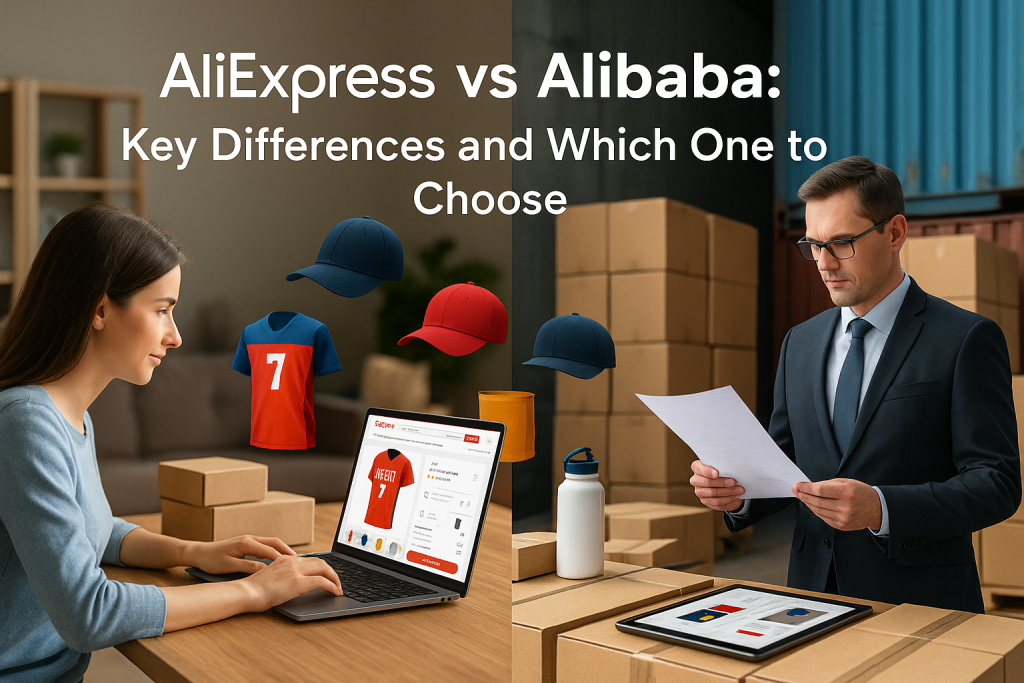Importing goods from international suppliers can be challenging, and understanding the right Incoterm is an important step toward success. One of the most widely used Incoterms is fca terms of shipment, or Free Carrier. In fact, research shows that FCA is chosen in about 30% of international trade operations, making it a popular choice for many buyers and sellers.
This guide will explain how FCA works, its benefits, and the key considerations importers should keep in mind when using this term. By the end, you’ll have a clearer sense of whether “fca terms of shipment” is right for your business and how it fits within the larger Incoterms 2020 framework.
Understanding FCA Terms of Shipment
FCA, or Free Carrier, is an Incoterm defined by the International Chamber of Commerce (ICC). It outlines the responsibilities of both buyers and sellers when moving goods across borders. Under fca terms of shipment, the seller delivers the goods to a carrier or another party nominated by the buyer, typically at the seller’s premises or another named place. Once the goods are handed over to the carrier, responsibility shifts to the buyer for any transport, insurance, and logistics issues that arise.

One major highlight of the 2020 revision of the Incoterms rules is the allowance for the seller to request an on-board Bill of Lading from the buyer’s carrier. This update aims to smooth out some complications associated with proving goods have actually been loaded onto the transport vessel. Additionally, around 58% of FCA applications involve multimodal transport, illustrating how flexible this term can be for goods moving by more than one mode of transportation (for example, from truck to ship and then to train).
Why FCA Is So Popular
Many exporters favor FCA because it simplifies their obligations after the goods leave their control. Statistics indicate that about 69% of sellers who use Incoterms prefer FCA, underscoring its widespread acceptance. At the same time, buyers appreciate the clarity it brings, especially if they have existing relationships with freight carriers. This arrangement often leads to smoother coordination, clear cost distribution, and fewer misunderstandings once the cargo is handed off.
Examples of Businesses That Use FCA
Some well-known organizations and shipping experts rely on detailed FCA guidelines. For instance, Flexport and Shipa Freight offer resources on applying FCA, while Global Negotiator provides step-by-step guidance on the obligations of buyers and sellers.
Similarly, law firms like Shepherd and Wedderburn and HFW (Holman Fenwick Willan) advise clients on the legal aspects of Incoterms 2020, ensuring contractual terms align with FCA requirements. Each of these groups emphasizes that FCA’s advantage often lies in the ability to choose your own carrier, negotiate favorable freight rates, and manage every part of the transportation chain once the goods depart the seller’s premises.
Key Responsibilities Under FCA Terms of Shipment
When choosing fca terms of shipment, it’s crucial to understand who handles which steps. The responsibilities and costs under FCA are relatively straightforward, but both parties should know their duties to avoid confusion.
Obligations for the Seller
Under FCA, the seller is responsible for preparing the goods for export and delivering them to the carrier or another party specified by the buyer. This also means the seller must handle export clearance in most cases, making sure all documents, permits, and regulations are in place before the goods leave the country of origin. The seller should package and label the goods properly, supply any relevant paperwork, and ensure that the chosen location is an agreed-upon site for the handover of responsibility.
Once the goods are handed over, the seller’s role largely ends. At that point, risks shift to the buyer. With the updated Incoterms 2020, sellers can request that the buyer’s carrier issue an on-board Bill of Lading confirming the cargo has been loaded. This can be critical for financial and documentary requirements, especially when banks require evidence of shipment in a letter-of-credit transaction.
Obligations for the Buyer
On the other side, the buyer is responsible for arranging the main carriage—whether that’s by sea, air, or land—after the seller delivers the goods to the agreed location. The buyer takes on the cost of freight charges, insurance (if desired), and any extra expenses once the goods are with the carrier. The buyer also handles import clearance requirements, including duties, taxes, and any government permission necessary to bring goods into the destination country.

If something goes wrong during shipping–such as a carrier delay or damage during transit–it’s typically the buyer’s responsibility to address and resolve the issue. Because of this, many importers who choose FCA do so when they already have strong relationships with logistics providers or have arranged competitive freight rates.
Benefits of Using FCA Terms of Shipment
Choosing fca terms of shipment can provide significant advantages to importers who want control over their shipping process while still counting on sellers to manage export clearance. Below are some reasons why businesses of all sizes opt for FCA.
- Flexibility Across Multiple Transport Modes
With FCA, you can arrange multimodal transport, which is a big plus if goods need to travel by truck to a port, move by ship, and then continue by rail or air. In fact, studies suggest that about 58% of FCA shipments involve multimodal routes, making it a prime option for complex supply chains. - Negotiating Better Freight Rates
Importers can choose their own carrier, which often leads to cost savings. If you have good relationships with freight forwarders, you might secure lower shipping rates or more favorable terms. - Clear Boundaries of Responsibility
The commercial and legal obligations are clearly divided at the point of delivery to the carrier. This helps prevent misunderstandings regarding who pays for which part of the journey. - Up-to-Date With Incoterms 2020 Revisions
The allowance for sellers to request an on-board Bill of Lading improves trade documentation flow. This update makes it simpler for both parties to comply with banks’ documentary requirements, reducing the risk of payment delays.
Common Mistakes When Using FCA Terms of Shipment
While fca terms of shipment might seem straightforward, importers and exporters can fall into a few common traps. Avoiding these pitfalls helps ensure a smooth transaction.
Misunderstanding Export Clearance Obligations
Under FCA, it’s the seller’s job to handle export clearance. Problems may arise if the seller does not complete the paperwork correctly or if the buyer mistakenly tries to handle export permits. Always confirm who will manage these tasks before finalizing the contract, and verify that local rules and regulations on export compliance are fully understood. Consulting resources like Global Negotiator or a professional law firm such as Shepherd and Wedderburn can help clarify the fine print.

Confusion About the Named Place of Delivery
FCA requires both parties to agree on a specific handover point. Whether it’s the seller’s warehouse, a freight terminal, or a carrier’s hub, clarity is essential. If the exact place isn’t well-defined, disruptions can lead to extra charges or delayed shipping. In some cases, the buyer may assume the seller is responsible for transportation to another location, creating conflicts about who pays for those costs. To avoid disputes, identify the named place of delivery in writing.
Tools and Resources to Support FCA Arrangements
Even though FCA is one of the simpler Incoterms, managing international logistics still involves multiple steps, legal considerations, and document tracking. Thankfully, several tools and resources exist to help importers learn more and stay organized.
- ICC Incoterms® 2020 App
This official app from the International Chamber of Commerce gives you the latest Incoterms details at your fingertips. It breaks down each rule with easy-to-digest summaries. - Incoterms® 2020 Digital Guide
Produced by ICC Germany and Luther Law, this interactive tool lets users select scenarios to figure out which Incoterm might be best. It can help confirm whether FCA is truly the right option for your specific needs. - Flexport’s Incoterms Guide
This modern freight forwarder offers a user-friendly Incoterms overview, including specifics about handling a free carrier arrangement. Flexport also provides digital solutions to streamline shipping. - Global Negotiator’s Incoterms Guide
If you need a step-by-step checklist of obligations, documentation, and potential pitfalls, this resource can be a valuable companion. It highlights key aspects of FCA, from cost division to risk transfer. - Shepherd and Wedderburn’s Incoterms 2020 Overview
It offers a legal lens on the various rules. If you’re unsure whether your contracts are up to date or you need a deeper dive into liabilities, this overview provides clarity.
Recent Trends and Developments
- Increased Use of FCA
The popularity of FCA continues to rise, representing about 30% of international trade operations. This growth is driven by its adaptability and clear delineation of costs and responsibilities. - Digitalization of Trade Documentation
Tools like the Incoterms® 2020 Digital Guide represent a larger move toward paperless systems and streamlined communication across stakeholders in the supply chain. - Enhanced Security Measures
With Incoterms 2020, the ICC included clearer security obligations in articles A4 and A7. These revisions put a stronger emphasis on information sharing and regulatory compliance. - Clarification of Cost Allocation
The latest rules aim to eliminate disputes that often arise from ambiguous cost-sharing. Buyers and sellers now have more explicit guidance on who pays for each leg of the journey, offering greater transparency.
Conclusion
For importers aiming to operate more efficiently, fca terms of shipment can be a strategic choice. Whether you’re handling multimodal transport or prefer to take charge of your own freight booking, FCA reduces ambiguity once the goods have been handed over to the carrier. It also provides exporters the comfort of knowing that they only need to manage export formalities and immediate delivery to the named place.
By embracing the resources available—such as the ICC Incoterms® 2020 App, Flexport’s digital tools, and legal insights from organizations like HFW—you can confidently make the most of FCA and minimize complications. Ultimately, understanding your duties, clarifying the point of delivery, and maintaining open communication with your suppliers and carriers will help ensure smooth global sourcing and shipping for your business under “fca terms of shipment.”


